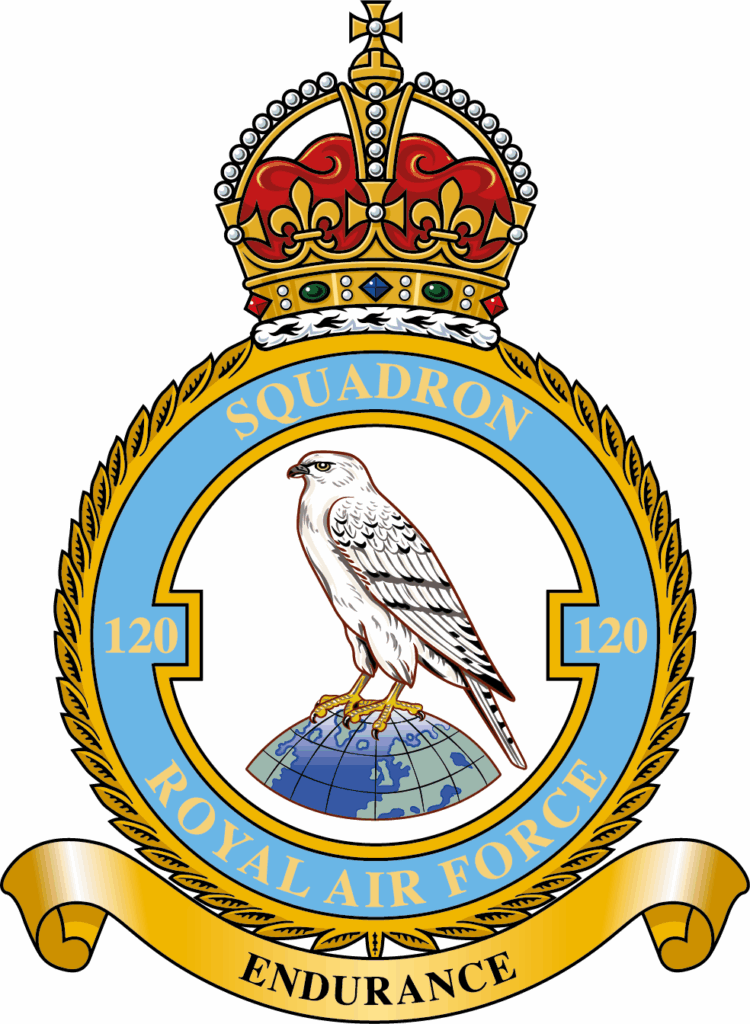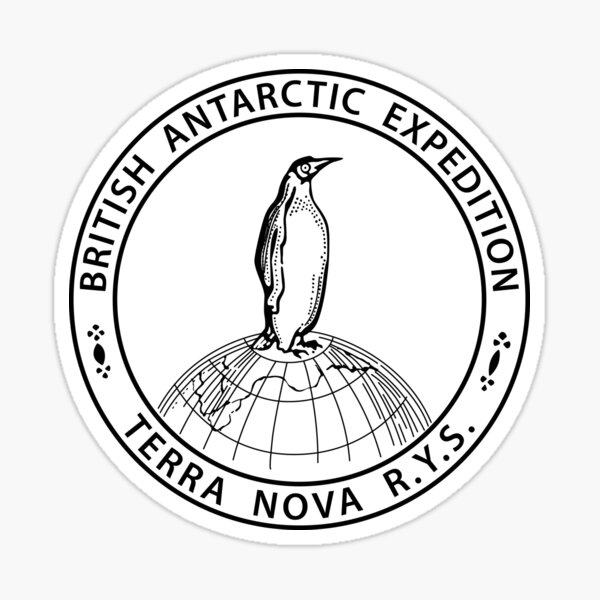The description of the Squadron Badge is simply “Standing on a Demi-terrestrial Globe, a Falcon close”.

The Badge was approved by His Majesty King George VI in August 1944, and commemorates the most successful time in the Squadron’s history, when it deployed in its entirety to Iceland. Combined with operating the first Very Long Range maritime patrol aircraft, this finally closed the mid-Atlantic gap and gave U-Boats nowhere out of range of aircraft.
The Squadron has been awarded nine battle honours. Those with an asterisk indicate those with the right of emblazonment on the Squadron Standard.
Atlantic 1941 – 1945*
Biscay 1941 – 1944*
Arctic 1942 – 1944*
Channel and North Sea 1941 – 1944*
South Atlantic 1982
Gulf 1991
Iraq 2003
Iraq 2003 – 2011
Afghanistan 2001 – 2014
The four World War II battle honours, for which the Squadron was awarded the right of emblazonment, appear on the Squadron Standard, either side of the Squadron Badge.
Experts in heraldry may notice that the official description of the Badge isn’t complete blazon — ie the badge could not be completely recreated from just its official description. This stems from an agreement the Air Ministry came to with the College of Arms in the 1940s to exclude all references to colours in the College’s official descriptions of RAF squadron badges. This was to make the descriptions shorter, ultimately to save money when printing lists of squadrons! But the understanding was that the official drawings produced by the College would be the canonical designs, hence there is no doubt that the falcon is an Icelandic Gyrfalcon (which reportedly was enthusiastically endorsed by the Chief of the Air Staff, Charles Portal, who had an interest in falconry).
Heraldry is often created with throwbacks to earlier designs in mind, as well as the occasional in-joke. It is thus entirely possible that the creators of the Squadron badge were familiar with the badge of Captain Scott’s ill-fated 1910-1913 British Antarctic Expedition, which shares a similar design.

